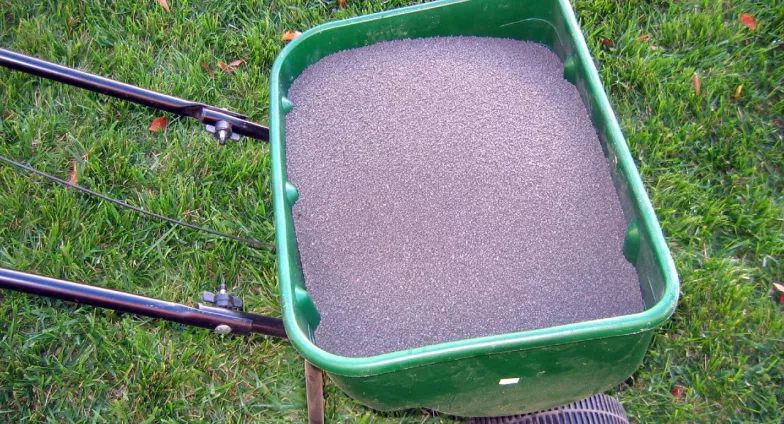What type of fertilizer is best?
A fertilizer bag has three numbers, indicating the percentages of nitrogen, phosphate and potash. Nitrogen is the most important nutrient. Look for a fertilizer with at least 25% nitrogen. If possible, select a fertilizer that contains some slow-release nitrogen (sulfur-coated urea, urea formaldehyde and IBDU). This will gradually feed the lawn this fall and next spring.
The second number, phosphate, is abundant in our soils and is rarely needed in established lawns.
The third number, potash, will help our lawn to tolerate stresses, including drought and frigid winter temperatures. Most winterizer fertilizers contain 5–10% potash.
Should I use a weed-and-feed fertilizer?
These fertilizers are okay at feeding lawns and okay at killing weeds, but not great at either. Here’s why:
Bad timing. The best times to feed a lawn (late May and early September) are not the best times to control weeds, namely crabgrass (late April) and broadleaf weeds (mid to late September).
Bad for the environment. Landscapes (including trees) grow better when herbicides are sprayed only where needed on lawns. Using weed-and-feed fertilizers puts toxic chemicals everywhere, even in areas with no weeds.
Bad control. Herbicides must be absorbed by weed leaves to work. Some small-leafed weeds such as clover and black medic cannot hold onto the granules and absorb the herbicide.
As an alternative, spot sprays of liquid herbicide applied directly onto weedy areas can be applied to kill weeds at the most effective time and in a more effective manner.
Any other tips?
Irrigate the lawn after applying (unless you use a weed-and-feed). This increases the effectiveness of the fertilizer, prevents the fertilizer from burning the grass, and reduces the likelihood that the fertilizer will runoff the soil during a rainstorm.
For a uniform distribution of the fertilizer, apply in two directions going at right angles to one another. For example, apply half of the fertilizer going in north and south directions, and the other half going east and west directions.
Sweep up any fertilizer granules that are spilled on sidewalks or driveways to prevent polluting our streams and lakes.

